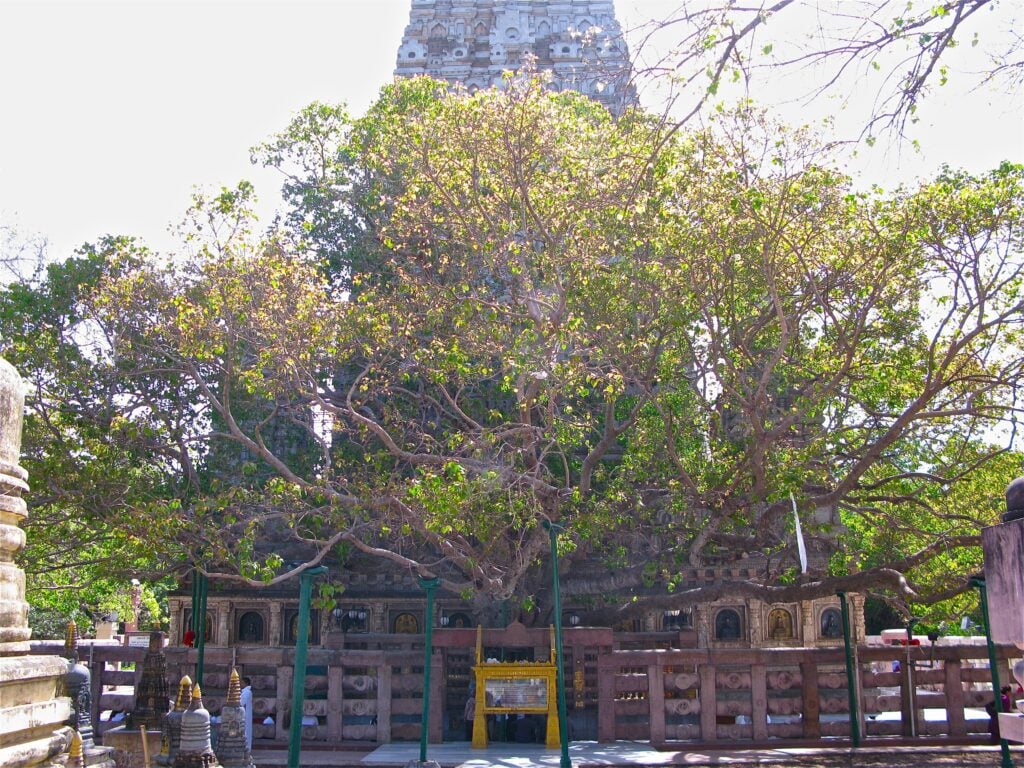We all know that trees can live for a very long time. It’s no surprise that they live longer than humans and possibly most other animals on the planet. Trees can live for as little as 100 years or as long as a few thousand years, depending on the species.
The oldest tree on Earth with a known planting date is the Bodhi fig tree in Anuradhapura, Sri Lanka. An Indian Princess planted it in 288 BC. The sapling was derived from the original tree under which Buddha attained enlightenment. Every year on the full moon in December, the tree is honored.
The Sacred Bodhi Fig Tree
While the tree has religious significance in Hinduism and Jainism, it is a simple deciduous semi-evergreen with a broad trunk that can reach heights of nearly a hundred feet. Its natural habitat is tropical Asia, as its significance in many Asian religions suggests, but it is now cultivated in various forms worldwide.
Bodhi trees grow in various temperature zones due to the continent’s highly varied altitudes and temperatures. It is also particularly resistant to changes in precipitation. The peepal tree is so fast-growing and well-adapted to so many environments that it is considered an invasive species in some parts of the world. The only reason we don’t see more of this species, also known as Ashwamedha trees, is that it relies on the aganoid wasp as its only naturally occurring pollinator outside human efforts to cultivate it. Because they are closely related to the bodhi, they are also known as fig wasps.
If there is one thing this fig tree is particular about, it might be the soil it prefers. It can still grow in various soil types, but it chooses to establish roots in deep sandy loam or loose soil with trace amounts of clay. The bodhi also grows well in well-drained soil. (Source: Daves Garden)
How to Grow a Bodhi Tree?
Regardless of the tree’s significance to you, peepul trees are still grown in nurseries and sold as ornamental trees. Sacred fig trees can produce figs, but they’re tiny and of dubious color and flavor, reaching only 1 to 2 centimeters in size.
In some countries, their vibrant, heart-shaped leaves with a signature tip make them a visually appealing addition to yards, pots, and even public parks. Ficus carica is your best bet if you want to grow edible figs. Unlike its religiously significant counterpart, this fruiting and flowering tree grows best in specific conditions. Plant fruiting fig trees in Zone 8 or warmer areas, and these plants, like the Bodhi, prefer loamy soil with good drainage. (Source: Daves Garden)
The Tree for Meditation
According to legend, Siddartha lived an ascetic lifestyle and meditated under a standard fig tree for years. He understood the source of all suffering and, as a result, freed himself from the world’s suffering and achieved enlightenment. The Buddha is a direct reference to the bodhi tree in his title.
Unfortunately, the original tree where this event is said to have occurred has since been destroyed. The site is still there, and the tree has been replaced several times. However, a cutting from the original survived the destruction and was transplanted in Anuradhapura, Sri Lanka. The sacred fig that has grown in its place has spiritual significance and is known as Jaya Sri Maha Bodhi, and the site is a popular pilgrimage destination for Buddhists. (Source: Daves Garden)
